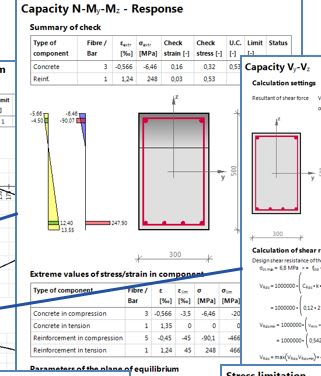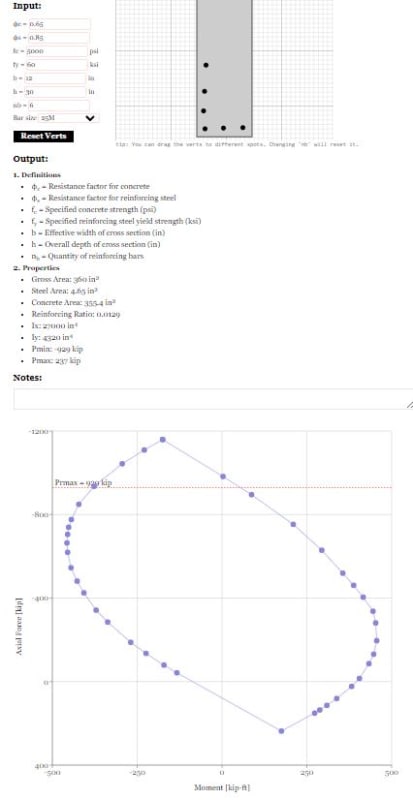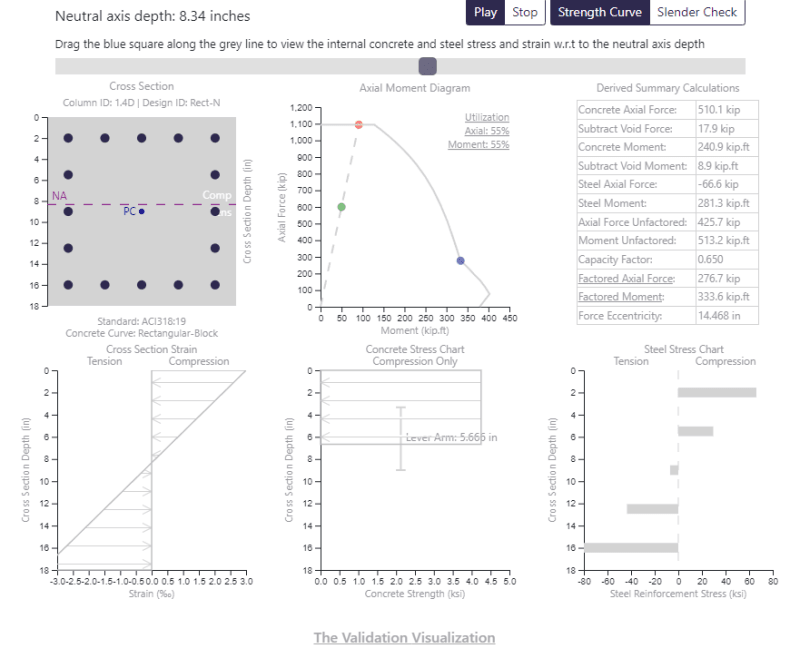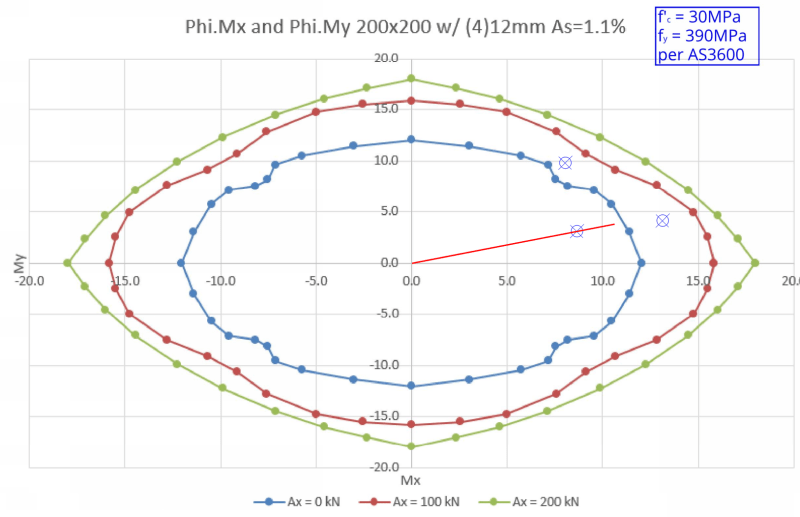ggcdn
Structural
- Dec 14, 2013
- 142
I've been working on a column design tool for calcs.app [Link] and have the basic functionality in place, but there's still work to be done. Current TODO list includes:
-Toggle for canadian / american code (currently only Canadian).
-Toggle for metric/customary units.
-Biaxial bending / P-M2-M3... this one looks tough.
-Input table to dump all your loads for plotting/checking.
-Slenderness
Looking for feedback on what's there and other must-have features to make this the best tool it can be.
Since its not really possible to ouput detailed calcs for each point on the PM curve, are there any calcs that would be useful to see printed out? I know spColumn will print a table of different values for each load case (NA depth, Mr/Mf, etc). S-concrete will create a report of different code checks and also check shear, which is nice.
Another cool idea I am thinking about way way down the line is making an 'ETABS connector' plugin which could send geometry and loads from selected columns right into the tool. Kind of like an interactive designer. Dont hold your breath though - A.I. might take all our jobs by time I get around to it.
-JA
try [link calcs.app]Calcs.app[/url] and let me know what you think
-Toggle for canadian / american code (currently only Canadian).
-Toggle for metric/customary units.
-Biaxial bending / P-M2-M3... this one looks tough.
-Input table to dump all your loads for plotting/checking.
-Slenderness
Looking for feedback on what's there and other must-have features to make this the best tool it can be.
Since its not really possible to ouput detailed calcs for each point on the PM curve, are there any calcs that would be useful to see printed out? I know spColumn will print a table of different values for each load case (NA depth, Mr/Mf, etc). S-concrete will create a report of different code checks and also check shear, which is nice.
Another cool idea I am thinking about way way down the line is making an 'ETABS connector' plugin which could send geometry and loads from selected columns right into the tool. Kind of like an interactive designer. Dont hold your breath though - A.I. might take all our jobs by time I get around to it.
-JA
try [link calcs.app]Calcs.app[/url] and let me know what you think




